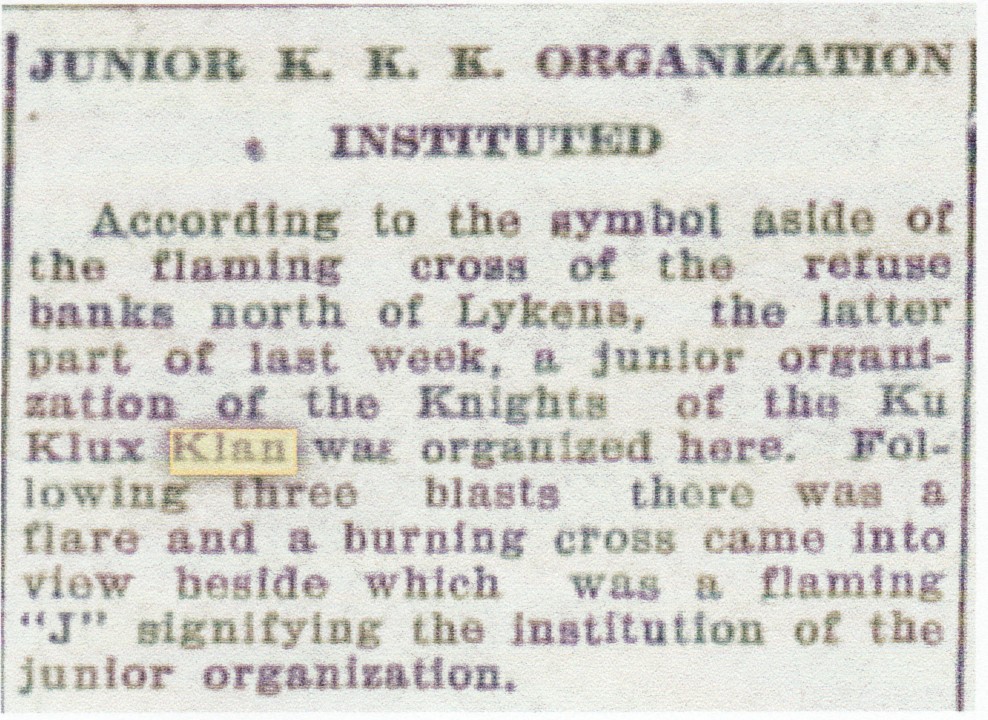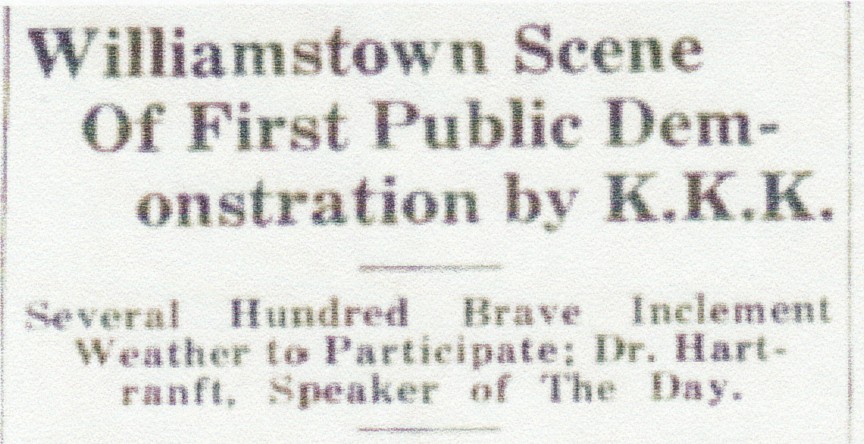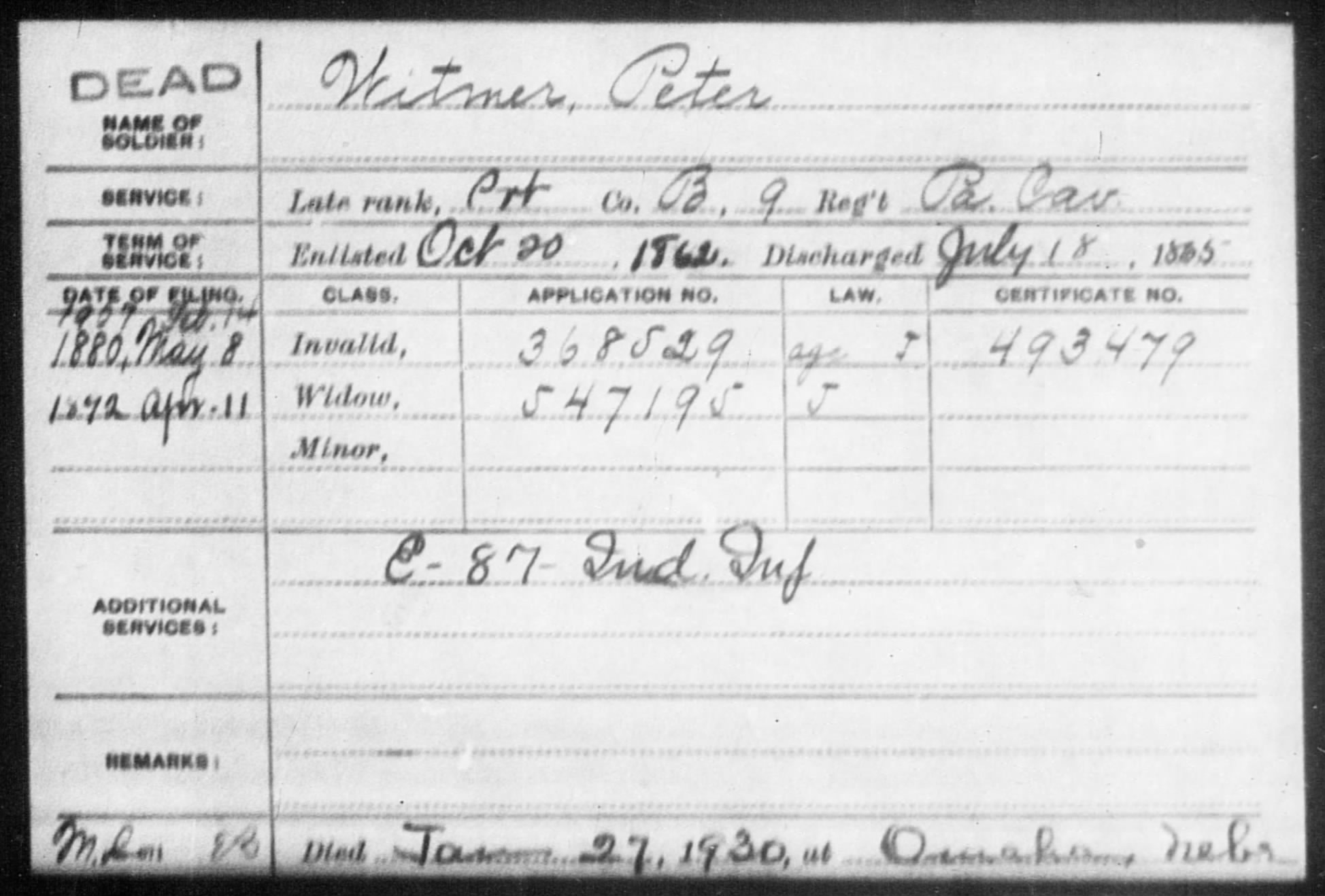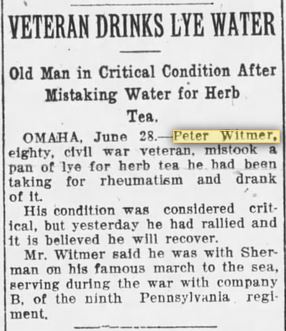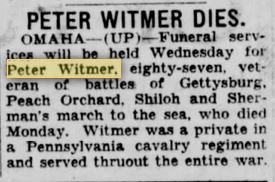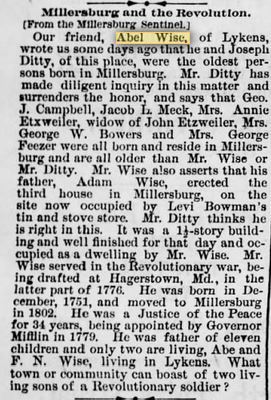Posted By Norman Gasbarro on March 21, 2018
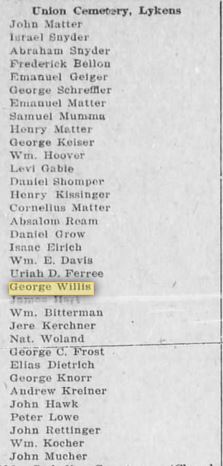
From a listing that appeared in the Lykens Standard, 17 May 1917, compiled by Claude Keiser, a member of the Sons of Veterans, the name of George Willis appears as a burial in the Union Cemetery, Lykens, Dauphin County, Pennsylvania. Keiser, in supplying the information, which included all the Lykens cemeteries. indicated that his list was of “soldiers of the Civil and other wars buried in the cemeteries of this section.”
The name of George T. Willis also appears in a semi-official listing of burials at the Union Cemetery, which was compiled and published as part of cemeteries of the region. On page 3 of that listing is the following:
WILLIS, Geo. T. – (Drummer Boy) erected by the W. R. C. #101 [Womens’ Relief Corps] of Lykens (Flag)
To date, no grave marker has been seen and there is no confirming information on Findagrave about a George Willis supposedly buried at Union Cemetery, Lykens.

In the records of Zion Evangelical Lutheran Church, a George C. Willis is recorded as a burial in 1872, with date of death as 20 May 1872 and age of about 21 years. This would indicate a birth year of about 1851, typical of Civil War drummer boys in that he would have been between the ages of 10 and 14 at wartime. But is this the same person?
No possible match was located in the 1860 Federal Census. Also, no possible match was located in the 1870 Census.
However, in searching the Harrisburg newspapers for a George C. Willis around the period of 1872, the following notice of death was found in a re-publication of accounts of the Lykens Register, by the Harrisburg Telegraph, 27 May 1872:
Sudden Death — George C. Willis Jr., alias Crystie, a young man for about a month in the employ of Henry Fisher, barber, of this place, died suddenly on Sunday night last. He had been ill for a week, but was in the shop on Saturday, apparently nearly recovered, although unable to work. He was attacked with hemorrhage of the lungs about 9 o’clock Sunday evening, and expired about midnight. He was buried on Tuesday, Rev. Kloss, of the Lutheran Church, officiating.
Deceased was without kindred or friends in this place, and all that is known of him, therefore, is derived from papers in his possession when he died, from which we gather the following: He was born in Cincinnati, Ohio, and at the breaking out of the war lived with his parents in Tennessee, and although quite young (being but twenty-two when he died), the adhesion of his father to the cause of the South created an estrangement between father and son which was never reconciled, and led the boy to a roving life. He served three years as a drummer in the 2nd United States Infantry, receiving his discharge in February 1869, and subsequently served fourteen months in the military academy drum corps at West Point, from which he was discharged 8 August 1871.
Upon leaving his parents, it is supposed, he adopted the name of Crystie, which is the name given in both his discharges. That his real name was Willie is evident from a letter written to him by his mother after he had left home on the inside cover of a religious work, from which we derive the information concerning his paternal relations. He was a quiet, gentlemanly young man, and bore evidences of good character and respectable birth. He came here from Lewistown, Mifflin County. His effects are in the possession of Mr. Henry Fisher, his late employer, who will cheerfully respond to any communication from his friends.
If the above information is correct, then George Willis did not have Civil War service, but served in what was known as the Indian Wars.
Much more research needs to be done on the story of this young man who happened into Lykens in 1872 and died there and is buried there. When was he honored by the Womens’ Relief Corps of Lykens and are there any news articles describing the honor?
__________________________________
News clippings from Newspapers.com.
Category: Queries, Resources, Stories |
Comments Off on Who Was George T. Willis, Drummer Boy, Buried at Lykens?
Tags: G.A.R., Lykens Borough
 ;
;
